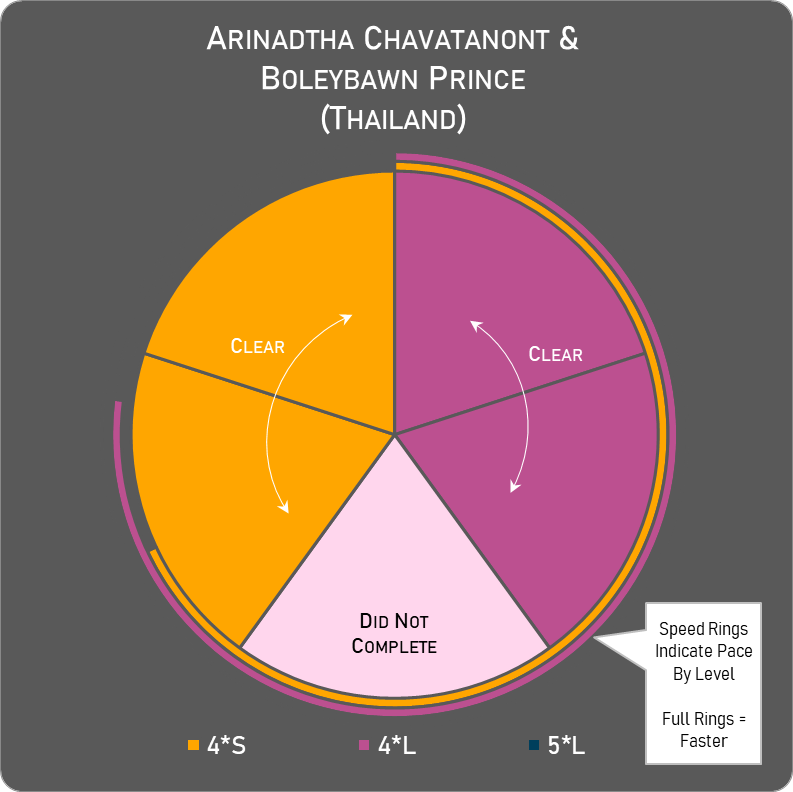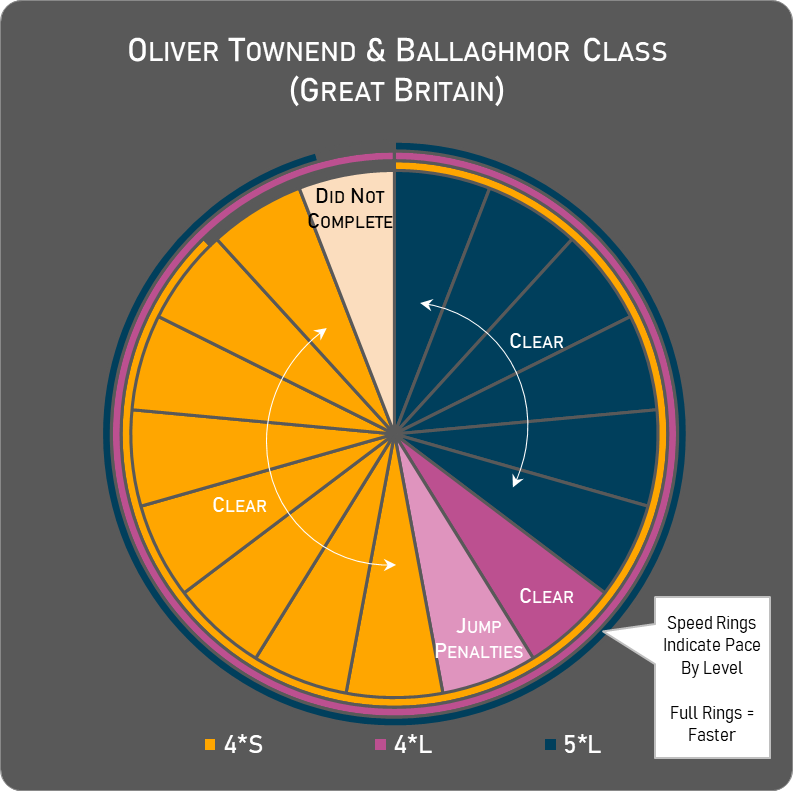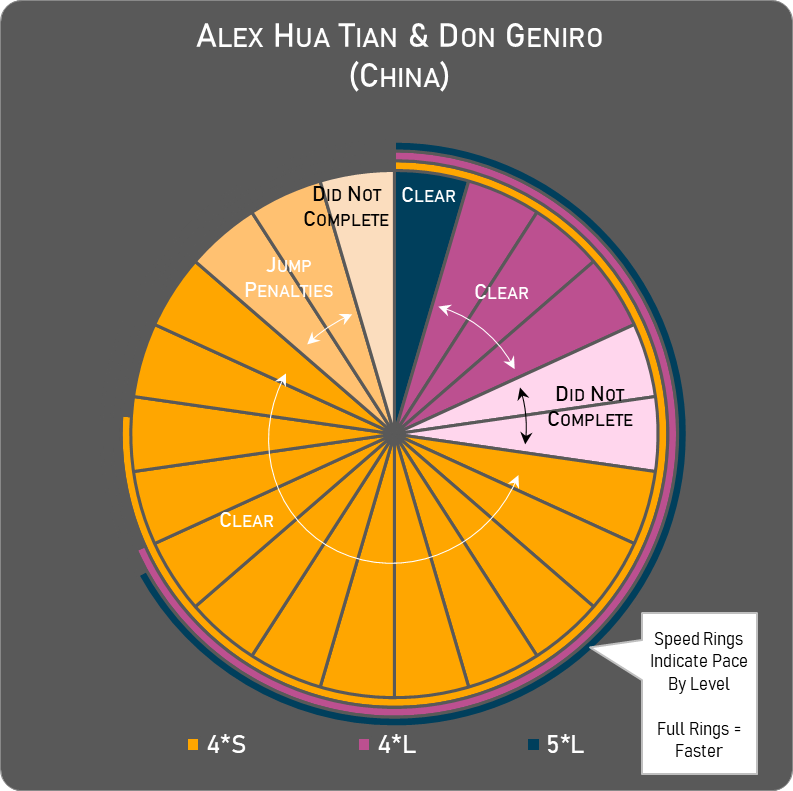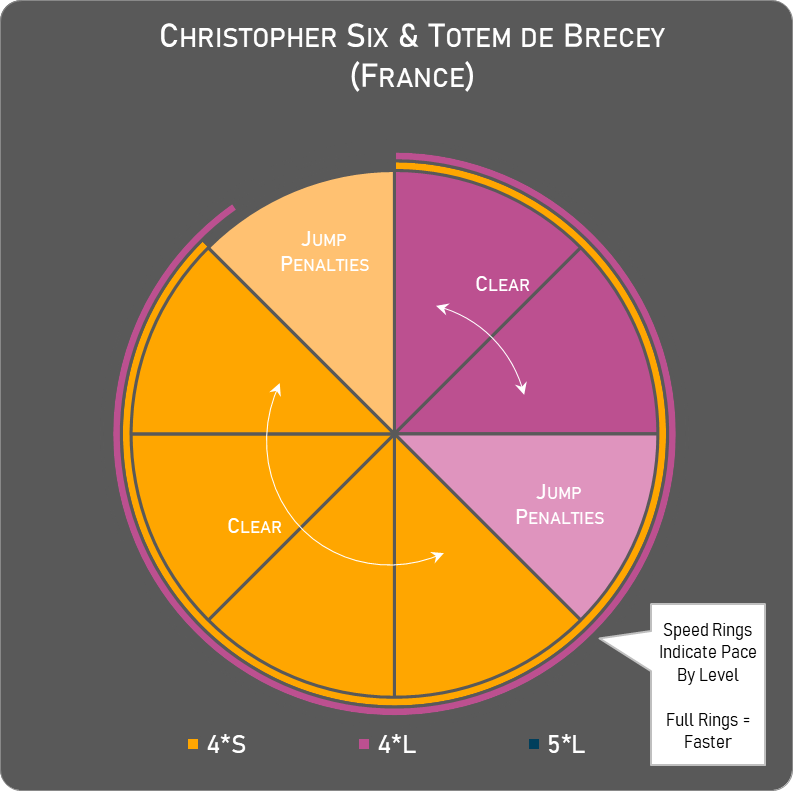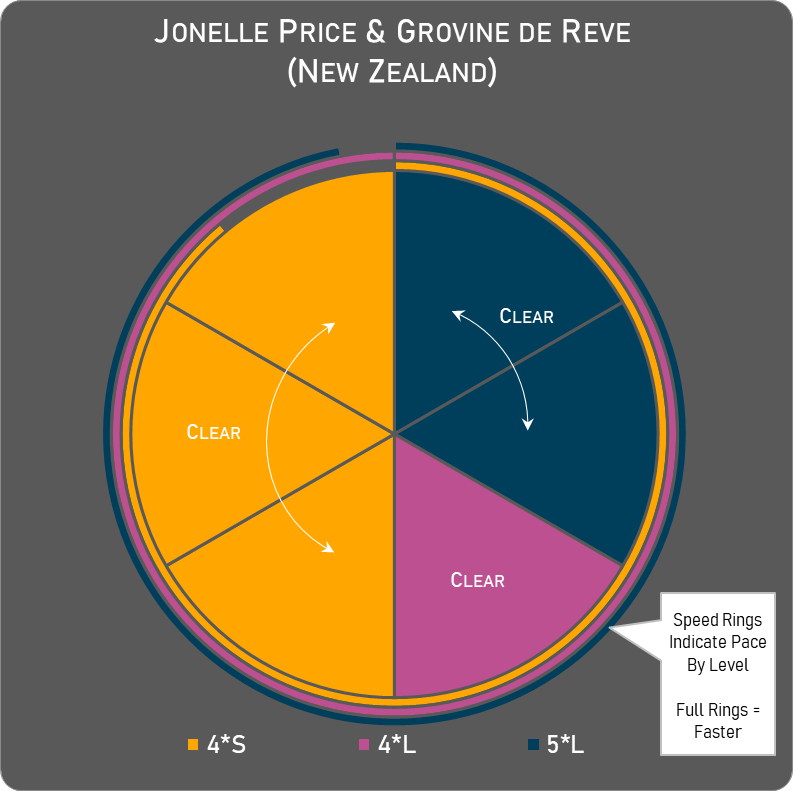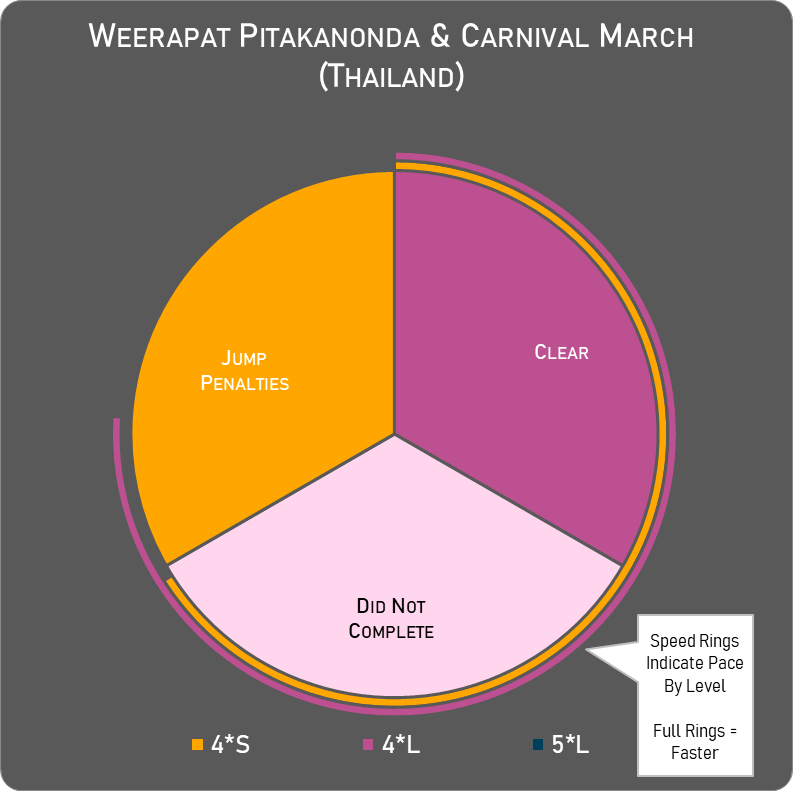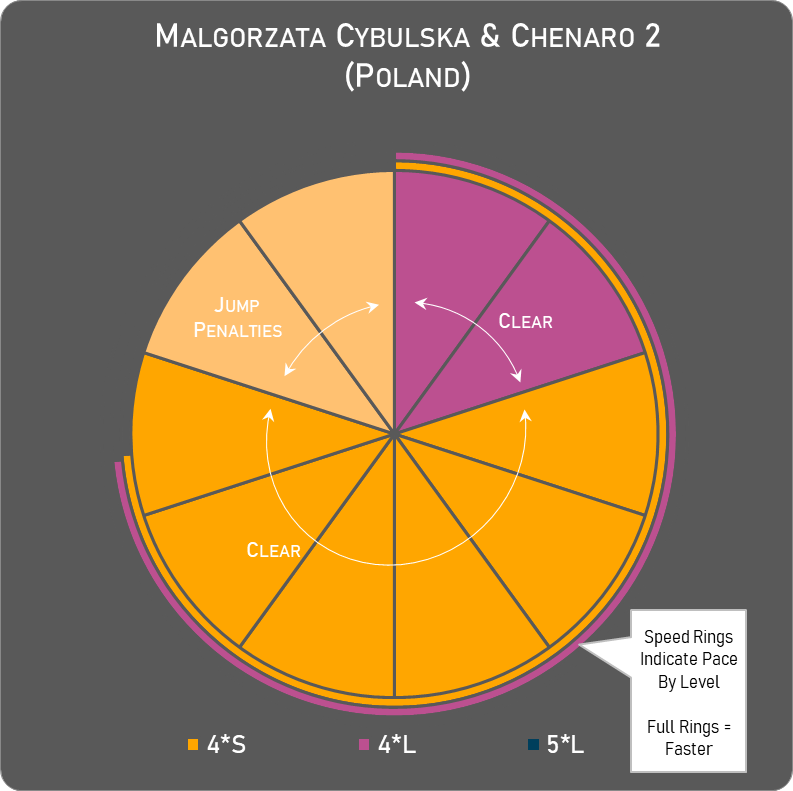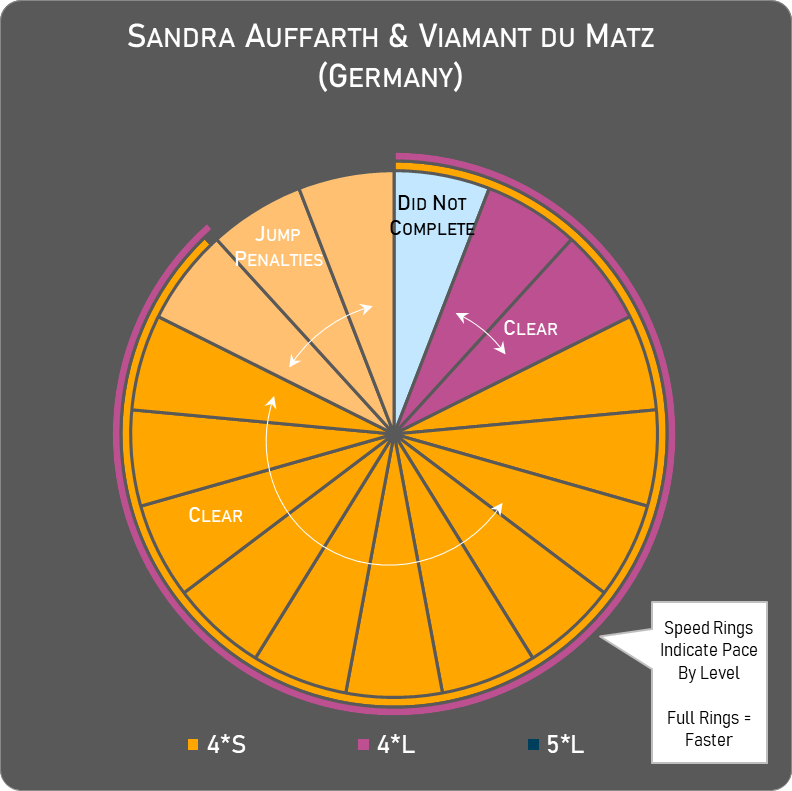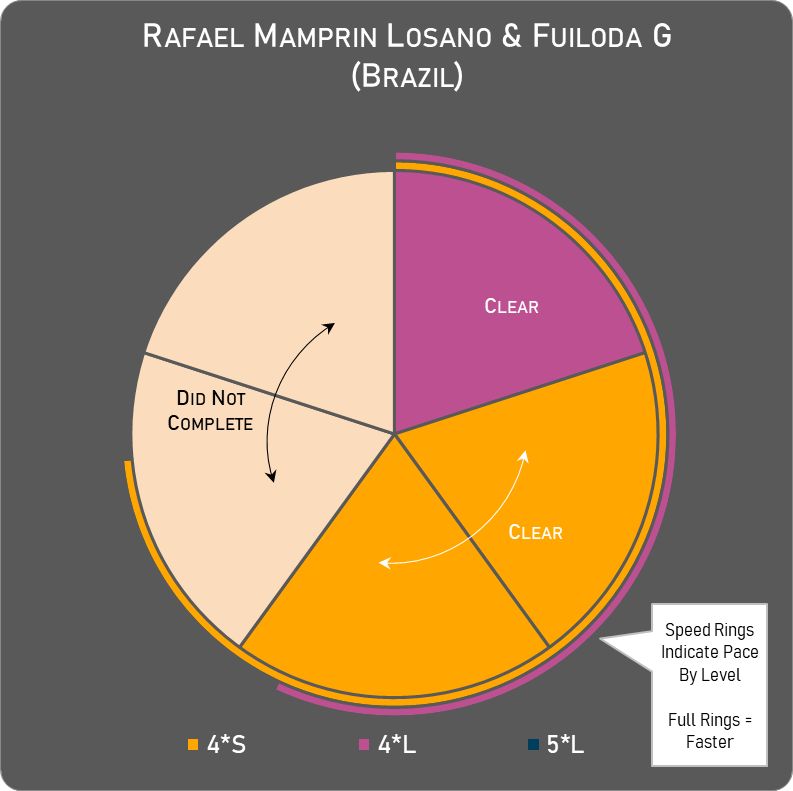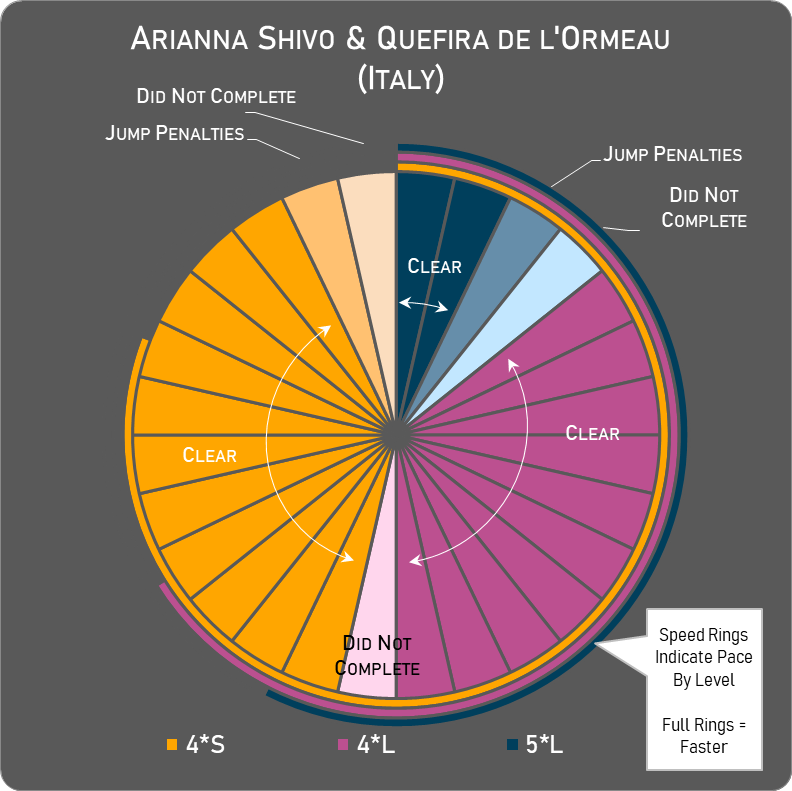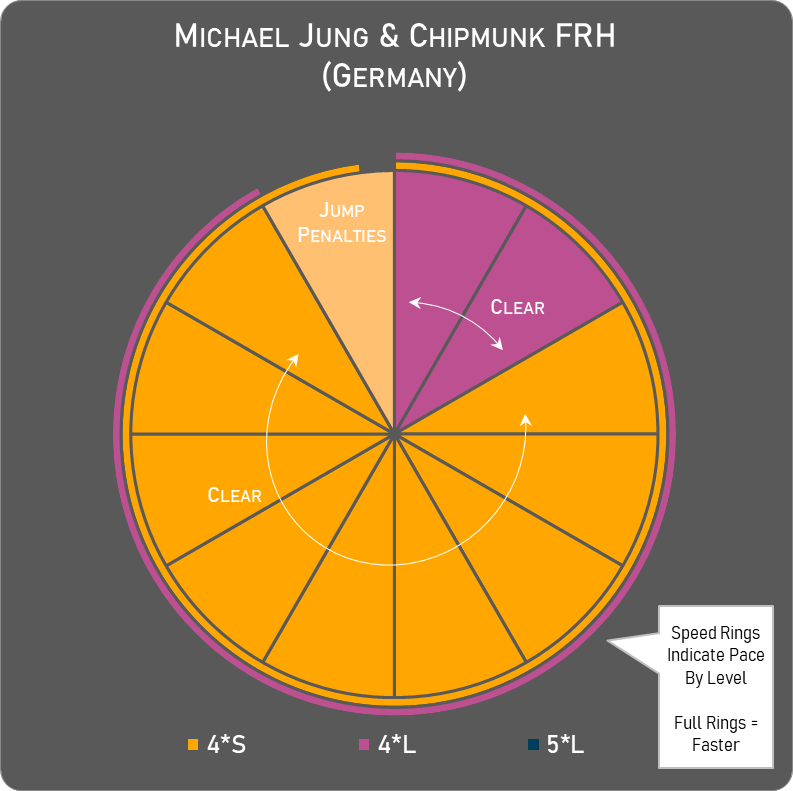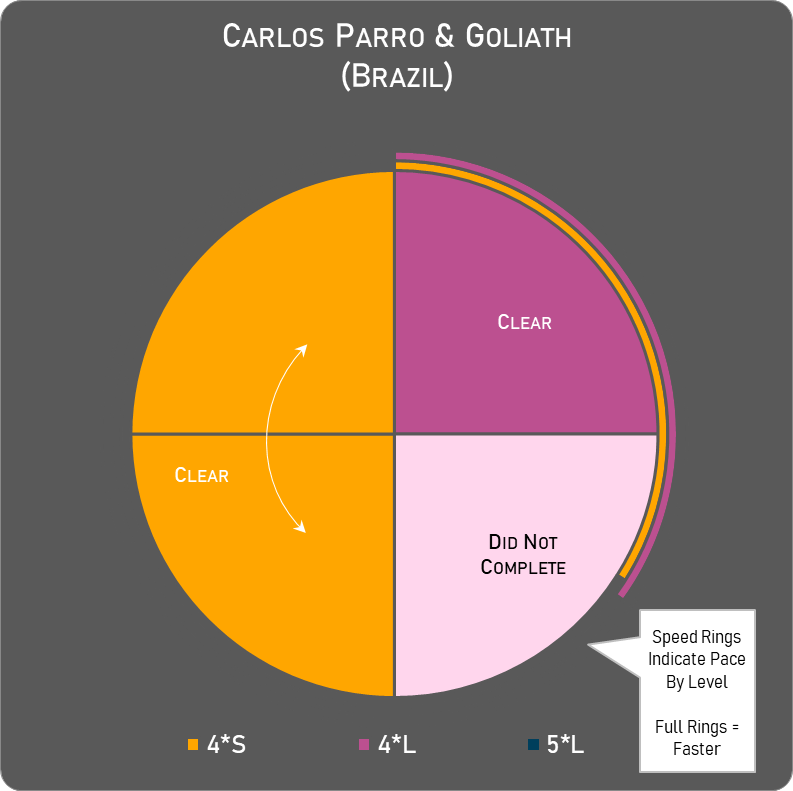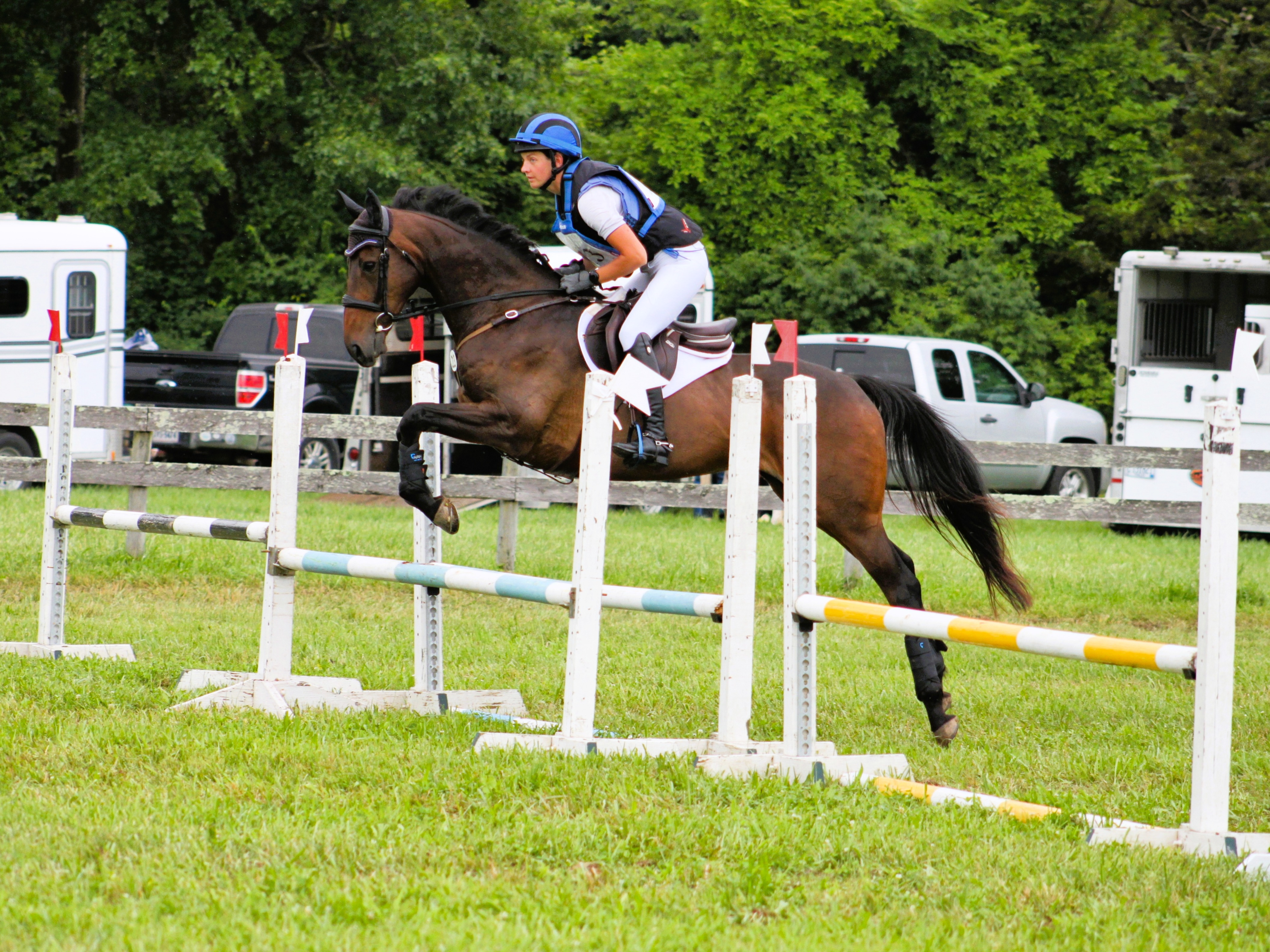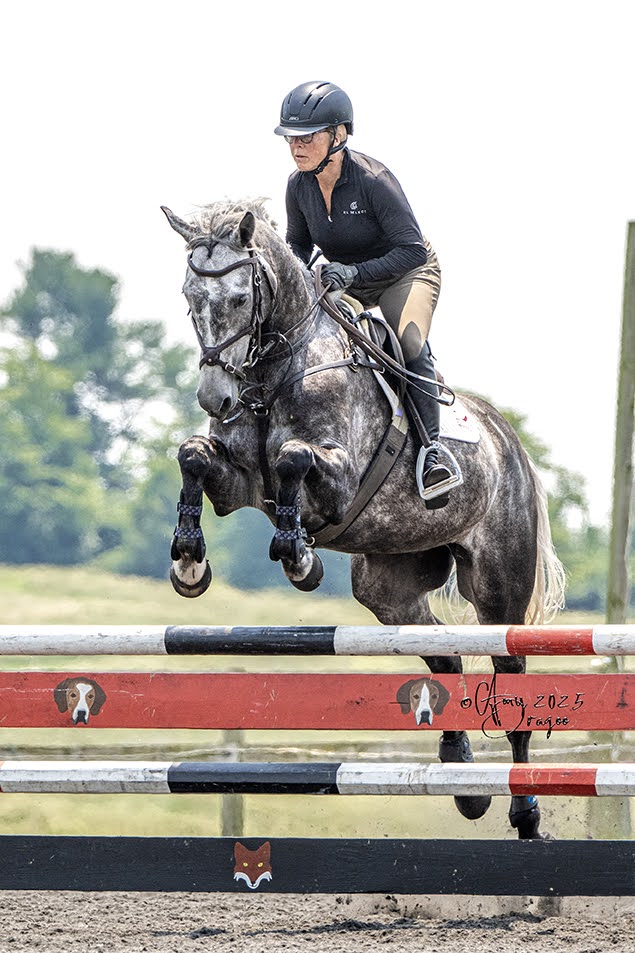It’s happening! It’s really, really happening! We’re just about to get underway at the Sea Forest cross-country course in Tokyo, and it truly is all to play for. Here’s how the top of the individual leaderboard is looking at the moment:

And here’s our team leaderboard. Note that Sweden has now moved down to 13th following a last-minute substitution:
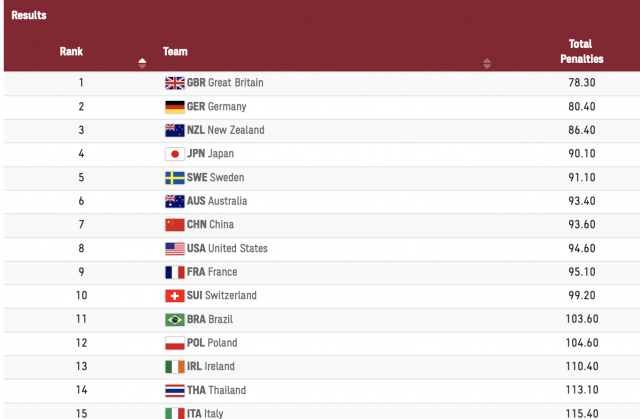
Here’s a look at how things could play on for each of our riders:
Cross Country Powerhouses of Tokyo
And, finally, our team and individual form guides.
Making Moves for Medals: Your Guide to the Tokyo Teams
Form, Function, and Fun Facts: Your Guide to the Tokyo Eventing Competitors
Let’s do this!
Tokyo 2020 Olympics: Website, Latest News, EN Olympic Digest Newsletter Signup, EN’s Instagram, EN’s Twitter, EN’s Coverage, The Ultimate Guide to Tokyo, The Form Guide: Team Edition, The Form Guide: Rider Edition

Want to stay in the know with all things Olympic eventing? We’re getting ready to kick off daily editions of our Olympic Digest starting Wednesday, July 28. You can sign up for free right here.
3.33: And our individual leaderboards have had a shake-up, too, with Oliver Townend moving into the lead:
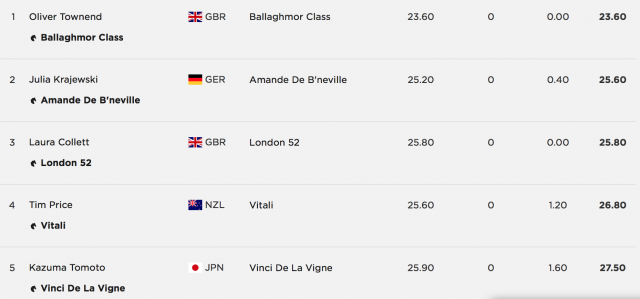

3.29: Let’s take a look at how our leaderboards are stacking up now. We’ve lost a couple of teams today: none of the Thai riders completed, while Sweden opted not to send their sub rider out onto cross-country after a non-completion and jumping penalties accrued by the previous two riders.


3.26: 22.8 time to add for Carlos and Goliath. We’ve had six riders clear inside the time today — though we’re expecting an appeals process over the next few hours, since that frangible at 14C broke SO many times. Any rider who feels their horse wouldn’t have fallen if the fence was solid is in a position to launch an appeal to try to have the penalties removed. So in theory, we could see Michi back up at the top.
3.24: Carlos is well down on the clock but he’s making the right calls here — he’s not chasing the time, but rather, using it as a teaching experience and building his horse’s confidence. This should be a Paris horse, for sure.
3.22: Our final horse and rider pair on course are Brazil’s Carlos Parro and Goliath, a ten-year-old who looks to have a really exciting future ahead of him.
3.21: Oliver Townend will leave overnight! Michi is the latest rider to take out the frangible pin at 14C. It’s fallen so many times today — and what a shame, as he romps home ten seconds inside the time. He moves down to tenth.
3.18: Tim Price pops through the final combination; he’ll be three seconds over the time to add 1.2 penalties to put the Kiwis in provisional fourth and himself in individual fourth for now.
3.17: Sarah Ennis finishes with that 20 and 17.6 time penalties. Ireland will go below Italy in the team standings. Tim and Vitali are looking so much more established than they actually are; they’re clear to 15 so far.
3.15: Oh, it’s all happening now! Michael Jung is out of the box to try to maintain his lead and take one step closer to winning his third consecutive Olympic individual gold.
3.13: Super stuff there for Italy’s Arianna Schivo and Quefira de l’Ormeau, who add just 2.8 time penalties. Sarah Ennis, meanwhile, has picked up a refusal at 16C — this isn’t Ireland’s day, though Austin did provide a wonderful pick-me-up for them.
3.12: This is a big round — New Zealand’s Tim Price and Vitali are right up there, but this is just their third-ever international cross country run as a partnership, and Vitali’s third since 2018.
3.09: Right, apologies for the delay here, folks — we’re having some technical issues. Super-committed Jard and Jan have come home with 12.8 time penalties, France’s Karim Florent Laghouag and Triton Fontaine have produced a clear inside the time, and Ireland’s Sarah Ennis is doing some good, scrappy riding to make it all happen out there with Woodcourt Garrison.
3.04: A clear round for Bao and Flandia! That’s three clears for China — what a super day for this historic first-ever team. They add 38 time penalties to put the team on 185.6.
3.00: Jan looking there or thereabouts on the minute markers. This is a reserve combination — they stepped in to fill the very big shoes of Pawel Spisak and Banderas. Bao now clear through 20ABCD but racking up time penalties with some long routes.
2.58: Wow, Jan and Jard are fighting for it! An aggressive, positive ride so far. And Bao and Flandia are clear through 15 and look to be having lots of fun out there.
2.55: A sweet pop and a nurturing ride through 12AB and 13. Poland’s Jan Kaminski and Jard off and away now after some wobbles at the start.
2.54: Fab through the water for Bao and Flandia. We’re hearing that Robin Godel’s Jet Set is up and receiving care from the vet team now.
2.53: Bao Yingfeng and Flandia 2 out of the box now as the final pair for China. Go on, lads!
2.49: Andrew’s looking very, very good on the time – in fact, he’s the fastest of the day so far, ten seconds inside the time. He likely won’t have been able to track his minute markers after that hold, so that really is impressive.
2.47: A couple of rather diving efforts from Vassily here, particularly to the skinny after the Mt Fuji drop. Andrew’s experience carries them through.
2.45: And we’re back in business! Andrew and Vassily soar 12AB and settle straight back into a confident rhythm.
2.42: Andrew Hoy is back on Vassily and walking back to the course. We should be underway again shortly.
2.39: Horses still in the misting tents here, but it looks like we’ll be coming to the end of the hold shortly. There is some movement at the site.
2.36: Looks like Andrew Hoy has been able to dismount and take Vassily into the cooling tent while he waits. This could be a long hold.
2.34: We have a hold on course now. We’re hearing of a fall for Robin Godel. No other info currently, but Andrew Hoy has been pulled up.
2.32: UGH. Calle 44 takes a huge leap off the Mt Fuji drop and can’t quite make the skinny happen. Yoshi has a very slow-mo fall and his day ends. Japan will need to decide whether to pull him forward to jump tomorrow or call their sub, Ryuzo, in. In any case, they add 200 penalties to their team score.
2.30: Andrew Hoy in his eighth Olympics for Australia, now on course with Vassily de Lassos. They were the fastest in the hot CCI4*-S at Luhmühlen in June, which was full of many of the horses and riders in this field.
2.28: NO. No, no, NO. Yoshiaki Oiwa and Calle 44, the last for Japan, get a 20 at 5C, and then have a really awkward clamber over the boat in the water at 8. It’s not going Japan’s way — so the country’s hopes will rest on Kazu Tomoto as an individual after his super pathfinder round.
2.27: That looks like an 11 for Robin — 14C doesn’t collapse, but there’s some movement there. Boyd and Tsetserleg are clear with 3.2 time to add — though we haven’t been able to see much of his round.
2.25: Boyd digging deep out there to make some of these lines happen – just keeping things exciting for everyone, I guess?! 22-year-old Robin Godel and Jet Set are absolutely zooming out there for Switzerland. I really rate Robin as a cross-country rider — even pre-Andrew Nicholson, he was great. This is actually a former Andrew Nicholson horse, too.
2.23: He does it! Tom McEwen is home clear with no time to add — in fact, he’s five seconds under, just like Oliver was, even with a long route. Great Britain stay in the top spot, adding absolutely nothing to their first-phase team score. Wow!
2.22: Tsetserleg makes a bit of an awkward stag leap over the boat in the second water but they’re through the complex clear. Korntawat has a second stop, this time at 20A, and opts to retire. His breastplate has broken, which can’t be helping much.
2.21: Tom clear to 15 so far and looking swift. Boyd Martin and Tsetserleg now on course as the last for Team USA; they’ve made it to 8A so far without issues. Tom McEwen clears that pesky corner at 14A without any problems.
2.20: 56.4 time penalties for Mikhail Nastenko. Korntawat picks up 20 penalties at 8C but has made it to 17 with no further issues. Tom McEwen clear to 14A!
2.18: Final team rider on course now for the team in the gold medal position — it’s Tom McEwen and the exceptional Toledo de Kerser for Great Britain. Copybook through the first water.
2.17: Into our final set of team riders now: Thailand’s Korntawat Samran clear through 10 with Bonero K. Nicolas and Altier have made it to 20A with no further issues so far after that early run-out.
2.15: Sweden are out of the team competition. After Therese’s fall and Louise’s issues, they’ve decided not to send their sub in, as she can’t even compete for an individual medal since she didn’t do a dressage test.
2.14: Merel has finally been pulled up late on course. Ecuador’s Nicolas Wettstein is having some issues with Altier d’Aurois; they have a run-out at 5B, a skinny in the first water.
2.12: Another on course for Russia, who are competing under the Olympic flag following the Russian ban from the Games. This time, it’s Mikhail Nastenko and MP Imagine If, and they’re clear through 14ABCD. Miroslav and Shutterflyke finish with that 20 and a further 46 time penalties.
2.10: Well, they looked great to 18, but not so much through 18. Miroslav Trunda and Shutterflyke are one of the rare combinations to go straight at 18ABC but have a seriously frustrating glance-off at the C element.
2.08: Uh-oh. Merel Blom makes a tactical decision with her route at 14ABCD — and it’s the wrong one. She mixes and matches her routes, jumps two B elements, and will be technically eliminated, though they don’t appear to have pulled her up yet.
2.07: The Czech Republic’s Miroslav Trunda and Shutterflyke, who were in the top ten at the Six Year Old World Championship in 2017, are looking great to 18!
2.06: Gurza looks like a horse who loves its job, in a way that suggests that Andrey has always provided good, confidence-boosting experiences. What a fun pair!
2.05: Russia’s Andrey Mitin and Gurza are doing really well out there — this horse is full of running and looks to be having a jolly time out there. They’re clear through 19, and we love this horse.
2.03: 14C’s frangible goes for Janneke Boonzaaijer, too. She also picks up a refusal at 18C. This is another big learning experience for a rider making a championship debut. She’s only 24.
2.02: We’re hearing some feedback that it almost looked like the horse stopped for a wee, which is obviously very unusual and rather concerning. We hope the horse is okay.
2.00: Rafa has retired Fuiloda three from home after the horse just…pulls itself up. Odd.
1.59: Victoria going great guns after that pin. They look really good, this pair.
1.57: Back into some individual riders: South Africa’s Victoria Scott-Legendre and Valtho des Peupliers are the latest to break the frangible at 14C. The Netherlands’ Janneke Boonzaaijer and Champ de Tailleur are clear over 11A.
1.55: Second of the Brazilians, Rafael Losano and the inexperienced Fuiloda G are clear and heading to the Mt Fuji drop combination. Down they pop, and he finds the skinny on the long route after a slight loss of balance. This young rider is based with Mark Todd and often rides out racehorses at home, and you can tell in how he travels across the country.
1.53: Viamant du Matz still ripping Sandra’s arms out. He doesn’t seem to mind this weather at all. I’d love to know what she feeds him — rocket fuel? My lazy mare could use some, anyway.
1.51: 14.4 time to add for Jesse Campbell after a seriously close moment at the Stumps and Bumps ‘coffin’ at 18. Diachello looks much more tired than he did at Kentucky.
1.49: THIS IS HUGE. Sandra and Viamant have a drive-by at 9C, and the horse looks particularly hard to control. This throws Germany’s hunt for gold into a tailspin.
1.48: Jesse clear to 15 so far; Austin sails home four seconds inside the time to add nothing to Ireland’s score! What a super, super round — this just goes to the show the exceptional strength in these sub pairs.
1.47: Sandra Auffarth — our former World Champ — leaves the box with Viamant du Matz. We saw them finish second at Luhmühlen 4* in June on their last time out, and they were super there. They need to be just as good today to put the pressure on Britain.
1.45: Susanna comes in three seconds inside the time but carries that 11 penalties. Jesse Campbell out for New Zealand with Diachello — they were 11th at Kentucky this spring and Jesse is picking this horse up over some of these fences to make it all happen. He gives himself some space to play with on his turns at the second water. Austin is clear to 20A, meanwhile.
1.44: Susanna Bordone also has the frangible at 14C. Wish I could show you playbacks of these without being sued by the IOC, because we’ve seen some perfect examples of why frangibles exist.
1.43: One second over the time for Nicolas Touzaint! That puts him on 33.5. Ireland’s Austin O’Connor and Colorado Blue clear through 13 now – they were subbed in after the first horse inspection.
1.40: Nicolas Touzaint and Absolut Gold HDC are on the go and clear through 21 – we haven’t seen much of them! Italy’s Susanna Bordone and Imperial van de Holtakkers are through 14A. We’re hearing Malgorzata lost her stirrup on cross-country – as in, it fully came off the saddle.
1.39: Regardless of whether Therese Viklund is allowed to jump tomorrow, it’s really over for Sweden’s competitive hopes this week.
1.38: It’s all unravelling for Louise, and for Sweden. After that pin she has a refusal at 18B, the Stumps and Bumps coffin.
1.36: Malgorzata and Chenaro pick up a 20 at 14C, that open oxer that so many have had a pin at. In fact, Louise Romeike and Cato 60 have just broken that exact pin.
1.34: Home clear for Sun Huadong and Lady! Super, super, super stuff – they might be a bit slow, with 42 time penalties, but they got the job done. Malgorzata and Chenaro are incredible at the Mt Fuji drop combination – not even a moment’s hesitation!
1.32: Tough job for Louise Romeike and Cato 60 now: they have no reserve rider, after a last-minute sub, and the first Swedish rider fell on course earlier. She won’t know yet whether they even still have a team, but she’s in the top ten individually. She’s got her game face on. Sun Huadong clear through the Stumps and Bumps at 18 but having some kind of tack malfunction — it looks like an overgirth, perhaps, that’s dangling below the horse’s belly.
1.31: Malgorzata Cybulska and Chenaro 2 on course and clear to 11A for Poland. This 23-year-old Psychology student has one horse and together, they’ve made it to the Olympics — the stuff of dreams!
1.29: China’s Sun Huadong and Lady Chin V’T Moerven Z are clear to 14A. They look super – really putting a tumble at Luhmühlen CCI4*-S last month behind them. Kevin heading towards home right now and flying! They’ll add just 2.8 time penalties.
1.28: NO! Heartbreak for Japan as Toshi picks up a 20 at 20A while well up on the clock. He finishes with 30.8 penalties to add. Kevin and Don Quidam are clear to 20A so far.
1.26: Andrew Nicholson has worked his magic with Melody. She finishes – though with a frangible at that open corner at 14.
1.24: Shout-out to Emma McNab, who has represented Australia herself. I know she wishes she could be here to support on her husband’s Olympic debut, but she’s being kept company at home by baby Charli, who was born just over a month ago.
1.23: Australia up next: it’s Kevin McNab and the utterly, utterly splendid Don Quidam, who stepped into the team from the reserve spot before dressage. They were sixth and clear inside the time at Kentucky this spring – they should be able to repeat this today. This is one of the best horses in the world, in my opinion.
1.22: It’ll be 4.8 time to add for Phillip and Z after the adjustment. Fouaad finishes clear with 11.2 time penalties — so he probably won’t be in the top ten tonight, but he really is the most impressive newcomer of the competition so far. And he’s quite hot.
1.20: Melody’s only been riding Toubleu for a year or so, but he’s super experienced — this is his third championship, and each has been with a different Swiss rider. Second Japanese rider out now — this is Toshiyuki Tanaka and Talma d’Allou, and Toshi is really going for it. Some super riding here!
1.18: Phillip home clear, and we’re just waiting for his adjusted time as a result of that hold. Fouaad and Seigneur Medicott looking good so far as they try to stay in the top ten. Melody Johner and Toubleu du Rueire for Switzerland are out now as well – Melody has only been eventing three years, but the Swiss are helped by Andrew Nicholson, so she couldn’t be in better hands.
1.16: WOW! In true Phillip style he has an INSANE save — remember his mad Rio gravity-defying moment? I hope there was a photographer there!
1.14: Phillip and Z have been restarted and look to really be going for that time. They come out here with huge amounts of experience, and also all that valuable intel from Doug. Now we have Fouaad Mirza finally starting! So excited to see this pair.
1.13: This is just an extraordinary moment for Laura and London. Let the naysayers be damned!
1.10: Phillip Dutton and Z on course now – and it looks like Phillip may have been pulled up. Laura jumps through the final combination looking strong and confident — and she finished two seconds inside the time! That’s both Brits thus far on their dressage score to keep Britain in gold medal position, and Laura moves onto the podium herself!
1.09: Oh no! Weerapat hits the deck at the final water.
1.08: Weerapat and Carnival March pick up 20 for a glance-off but regroup and continue onward.
1.07: Laura and London clear through 14ABCD so far!
1.05: Clear and lovely through the first water for Laura and London 52. She was slightly disappointed with their 25.8 dressage – but a clear inside the time would put a big smile on her face. Lea Siegl and Fighting Line add just 2.4 time penalties, which actually moves her ahead of Alex Hua Tian — even though he was third after dressage and she was 28th.
1.04: Back to team riders, though Weerapat Pitakanonda will only compete as an individual now with Carnival March after the elimination of Thailand’s first pair. He rides a former Piggy March ride and is clear so far. Laura Collett and her Pau CCI5* winner London 52 are out now!
1.02: Some issues for Peter Flarup and Fascination at the final water to add to issues at the Dragonfly Pond earlier. This is another ten-year-old. He tries to stop at the corner in the water after already leaving the ground and he spreads himself over it like butter on hot toast. They regroup and take the alternate route.
1.01: Fouaad Mirza will be starting later than his intended time, but will still be starting. Phew!
00.59: Fighting Lines swaps his lead back and forth as Lea squeezes him down to the skinnies – a disconcerting feeling for her, but they get the job done. This is such a cool, quirky, keen horse.
00.58: 20-year-old Tayberry still looks feisty and buzzy at the end of the course – they add 55.6 time penalties, with a fair few trots out there on course, but they’re here to make history and get the job done. Austria’s Lea Siegl — the youngest rider at 22 — is on course with Fighting Lines, which…is a fitting name for this horse, if we’re honest.
00.57: Peter Flarup and Fascination are out on course now – but India’s Fouaad Mirza and Seigneur, who are in the top ten, should have started before them. They don’t appear to have left the box, but there’s no word on why yet.
00.55: 35.6 time and two problems on course but Francisco is home and will have learned a lot. Tom Heffernan Ho has a good save after Tayberry pecks on landing — but they’re flying on! What a cool partnership.
00.53: We hear that Francisco and Source de la Faye had a 20 at the dragonfly pond at 11. Now they have another coming out of the final water complex.
00.52: Tom and Tayberry trot a bit down the hill to the dragonfly water to rebalance, pop the skinny first element nicely, and then work together to sort out an awkward twist over the second. They’re clear still!
00.50: Ah, man – Lauren Billys jumps the first part of the coffin at 18 and lets Purdy just cruise on by the next and pull up. She’s retiring on course. Meanwhile, Tom Heffernan Ho – the first-ever Hong Kong eventer at the Olympics – is clear through 10 with Tayberry, who at 20 years old and 15.1hh is both the oldest and smallest horse in the field.
00.49: Spain’s Francisco Gaviño Gonzalez clear through 10 with Source de la Faye, who was SUCH a spicy chestnut mare in the dressage. Now, she gets to do the fun stuff and is looking great so far. Lauren Billys does some savvy riding and goes long at the Mt Fuji drop to buoy Purdy’s confidence, and they’re clear through 17.
00.47: Home with 11 penalties for the frangible and 19.6 time for Miloslav, who has to rather nurse his tired, inexperienced horse home – but again, this is such valuable experience. I can’t wait to see this horse’s campaign for Paris 2024 (if I don’t steal him in the meantime).
00.46: Miloslav and lovely Ferreolus also take the frangible at the open corner at 14C, but it saves them big time. That would definitely have been a fall otherwise, and Miloslav is still nearly rocketed out of the plate. He gets himself back in, though.
00.45: Colleen is home clear with 7.2 to add! Big up Canada!
00.44: 61.6 to add for Alexandr Zelenko of Belarus after picking up that twenty and lots of time on course – but they’re home, and both will have learned plenty out there. These rounds are still so valuable to help develop these fledgling eventing nations.
00.42: Colleen and Qorry still sailing through and making this course look like a walk in the park, rather than a mad gallop across a landfill. Lovely to watch! And now Puerto Rico joins us – Lauren Billys and nineteen-year-old Castle Larchfield Purdy are clear through 5C.
00.41: Alexandr Zelenko goes long at the Mt Fuji drop combination. They’re through there clear, but they scramble down the drop when the horse goes very green. My surprise favourite horse, Miloslav Prihoda’s ten-year-old Ferreolus Lat, has started now for the Czech Republic.
00.39: Colleen Loach and Qorry Blue d’Argouges clear to 10 so far for Canada, and looking like they’re having so much fun out there. What a wonderful partnership this is — and this is going to be Qorry’s final hurrah before his retirement from the sport.
00.38: Marcelo Tosi and Glenfly come home clear with 8.8 time! They’re the most experienced Brazilian pair – the other two team members are on very green horses, so this round is so, so important. He’ll be able to impart tonnes of wisdom to his teammates.
00.37: Julia just showed everyone exactly what she’s made of after some bad luck at championships in the past. She is truly, truly top-notch. Alexandr Zelenko and Carlo Grande Jr, unfortunately, grind to the halt at the base of 11B and pick up 20.
00.36: Julia does it! Home clear with 0.4 time to add. That puts her on 25.6, which means she can be no lower than fourth – and right now, she’s in silver medal position!
00.35: I’ve never seen a horse as liberally greased as Carlo Grande Jr. He’s been iced like a cake. Is this The Great British Bake-Off? Has anyone else got a soggy bottom?
00.34: Time for our first individual rider! This is Alexandr Zelenko with Carlo Grande Jr for Belarus.
00.33: Jonelle and Grovine de Reve finish with two time penalties to add! Marcelo Tosi and Glenfly have decided to leave a shoe behind.
00.31: Marcelo Tosi and Glenfly for Brazil will round out our first team rider rotation. This is the only full Thoroughbred in the field; he unsuccessfully raced over fences but has been a super eventer at the top level.
00.30: Amande — or Mandy — looks a bit green at that four-part water on the curving line, but Julia gives her the helping hand she needs and they fly through. 2 time penalties and 11 jumping penalties for Sam and Flamenco. Such a shame in what was otherwise a lovely round.
00.29: Julia is an exceptional stylist and such a wonderful producer of horses. She produced Chipmunk, who leads with Michi Jung, to four-star and rode him at the 2018 WEG. She really, really deserves an exceptional result here.
00.27: Jonelle Price and Grovine de Reve are out for New Zealand and attacking in fine style, just as they did in Kentucky for third this spring. Vittoria Panizzon adds 3.6 time penalties but what a smart clear! She truly left her tricky dressage test behind her. Now time for Julia Krajewski and Amande de b’Neville, who were fourth after dressage. This mare isn’t super experienced, but has won Saumur four-star this year.
00.25: We hear Felix triggered a frangible at the coffin at 18, which means he adds 11 and drops down the order. That moves Christopher Six up into third of the riders who’ve gone so far. Argh!! Sam Watson now also triggers a frangible at the open corner. Bugger.
00.24: 1.6 time to add for Christopher Six puts him on 31.2. He was 13th before cross-country – he may be able to hold a good spot like that.
00.23: Sam Watson and Flamenco, the gorgeous golden horse, leave the start box for Ireland in their Olympic debut. COME ON, SAM!!!
00.22: Therese was in the top ten individually, too, so that’s a real heartbreak for her. Italy’s Vittoria Panizzon and Super Cillious have started, and Christopher Six is coming to the end of the course and still looking super attacking and very French — they always ride so positively. Allez, allez!
00.20: A double-dose of trouble at 18 — the Stumps and Bumps coffin. Joanna Pawlak picks up 20 here, and the next pair to tackle it – Therese and Viscera – hang a leg at the final element and Therese hits the deck. That’s a real shame, but doesn’t necessarily knock Sweden out – if Therese is deemed fit to jump, she can finish her competition tomorrow. She’ll add 200 penalties for failing to complete this phase, though.
00.18: The course here is so beautifully presented – lots of nods to Japanese culture, with an intricate hand-painted drop fence depicting Mount Fuji, and even some sushi wood carvings that look good enough to eat.
00.17: Sweden’s one-eyed superstar Viscera and Therese Viklund are just under halfway round and looking super confident — and quick — so far. France’s Christopher Six and Totem de Brecey leave the start box looking super-keen.
00.16: Alex’s super ride did exactly what it needed to as a team trailblazer round – but he’s sure to be so disappointed with those time penalties. He drops out of bronze position and goes below both Kazu and Felix.
00.14: Alex is home clear but will add 12 time penalties. It’s hard to go truly economically on these easily-distracted horses. Fantastic Frieda has lost a front shoe, but doesn’t appear to be slowing down.
00.13: Alex opts to go straight at the coffin and makes a beautiful job of it. Don Geniro is never an easy horse, though he’s exceptionally talented – he just has a very busy brain, and Alex is managing it exceptionally so far. Poland’s Joanna Pawlak and Fantastic Frieda are really kicking on!
00.11: Clear and four seconds inside the time for Shane and Virgil, even with a long route. That’s two inside the time so far, and course designer Derek Digrazia only predicted three or four…!
00.10: Virgil looking like he’s taking some riding today. He was named after Virgil Tracy, because apparently he ‘moved like a Thunderbird puppet’ as a young horse.
00.09: Okay I’m crying for the first of many times today: Kazu is home clear with just 1.6 time penalties. Few people have worked as hard or sacrificed so much, and all to try to build Japan’s eventing culture. He’s done something incredible today, and it’s the tip of an enormous iceberg for this awesome human being.
00.07: Shane’s balance saves him after an awkward jump at 12A, but nothing to add there! Kazu is clear through the final water with some real gung-ho riding, and third-placed Alex Hua Tian is on course now for China. Oh god, I feel sick!
00.06: Just two seconds over the time for 0.8 to add for Felix and Colero – but don’t get complacent about this time. This is another very experienced pair who have been top ten at Kentucky.
00.05: Australia’s Shane Rose and Virgil out of the start box. Kazu nearly gets booted out the side door over the open corner, which wobbles on its frangible but doesn’t break. A bit of a heart-stopping half-second but they’re bowling on well again now!
00.04: Felix and Colero go long at the very imposing Mt Fuji drop combination. They’re clear and jumping through the final combination now.
00.03: 8.02 is the finishing time for Doug Payne, which is 6.8 time penalties. A conservative clear that ticks the fact-finding box for Team USA – now Doug can pass that intel back to Boyd and Doug so they can plan aggressive rounds.
00.02: Kazu sits seventh overnight and is working his socks off with his teammates to win a medal at this home Games. We’re all cheering him on like absolute mad!
00.00: All the talk has been about how tough that time will be, so that’s a huge, huge round to get the day started with. Felix Vogg and Colero are clear through 12AB and looking very classy. Japan’s first rider – Kazuma Tomoto and Vinci de la Vigne – are on course now.
23.59: WOW! Oliver and Ballaghmor Class FLY the bullet trains and sail across the finish five seconds inside the time! He has seriously put the pressure on leader Michael Jung, and this bodes really, really well for Team GB as they chase their first Olympic team gold since 1972!
23.58: A long route for Doug at 12, by the looks of it. All on course are clear so far!
23.57: And now we’ve got Switzerland’s Felix Vogg and Colero on course as well. They sit eighth at the moment.
23.56: Oliver and Ballaghmor flying through the complex at 14. A flag wibbles in its holder but stays up, and they’re well inside the line anyway. They fly along past the five-minute marker.
23.55: They go direct at the third water. Make it look like a novice. Doug Payne and Vandiver leave the start box for the USA.
23.54: Much better over the frightening looking angled log drop into water at the second water complex. That’s a serious question, with a boat in the water, a bank up out, and then a corner on dry land – and all on a massive half-circle of a line.
23.53: Ballaghmor Class is a bit sticky over the log into water that Arinadtha fell at, but he keeps on going and jumps through the line perfectly.
23.51: And they’re out and over the first three fences in fine style. This is a first Games for Oliver, and this horse is one of the most consistent top-level competitors in the world. He’s won two five-stars and has never finished lower than fifth in all six runs at that level.
23.50: That really was no one’s fault; the rider worked hard to balance her horse and her horse, in turn, tried his best to stick the landing, but momentum wasn’t on his side. They do look fine walking away, and now we’re still waiting for our second pair to start. One minute to go until Oliver Townend and Ballaghmor Class, currently sitting second. A lot of pressure on him, and not a great confidence boost to know the rider prior didn’t make it past the first minute.
23.46: And she’s off. Gosh, this is a real shame – they look super over the first few single fences, but just get caught up on the log into the first water and both go down. They’re up very quickly but that’s Thailand eliminated as a team, as they have no reserve pair.
23.45: And we’re off! Thailand’s Arinadtha Chavatanont is first out of the box with Boleybawn Prince.









































